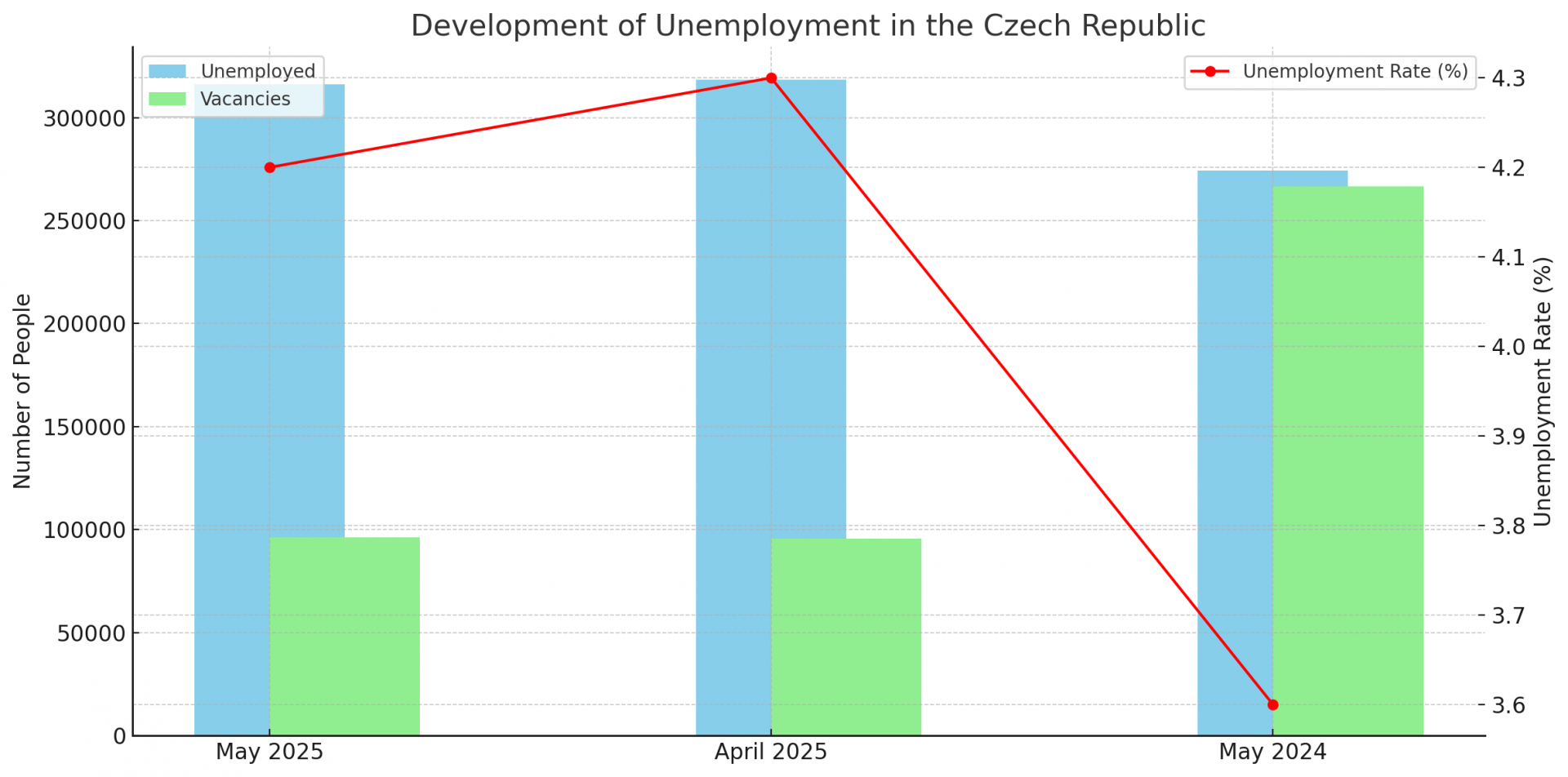Czech unemployment drops to 4.2% in May, but remains higher than last year
Unemployment in the Czech Republic declined slightly in May 2025, reaching 4.2%, down from 4.3% in April, according to data released by the Labour Office of the Czech Republic. Despite the monthly improvement, the unemployment rate remains higher than it was a year ago, when it stood at 3.6%.
The total number of registered unemployed stood at 316,060 at the end of May, a month-on-month decrease of 2,480. However, compared to May 2024, unemployment rose by approximately 42,000 people. The number of available job vacancies increased modestly by 615 to 96,413.
Labour and Social Affairs Minister Marian Jurečka (KDU-ČSL) attributed the monthly decline to seasonal employment, particularly in the hospitality and tourism sectors, which are preparing for the summer season. More than 9,000 job openings in these sectors were listed through public employment offices.
Analysts agree that seasonal factors contributed to the monthly drop. According to Filip Pastucha of Deloitte, seasonal hiring typically leads to a temporary dip in unemployment. However, after adjusting for seasonal effects, unemployment appears to be gradually increasing due to persistent weakness in industrial demand. He noted that the current figures mask deeper structural challenges in the labor market.
Pavel Sobíšek, Chief Economist at UniCredit Bank, observed that the labor market is adjusting to lower economic growth. He expects unemployment to remain above 4% for the rest of the year but does not anticipate a sharp rise in the near term.
Regionally, unemployment was highest in the Ústí nad Labem Region at 6.5%, while Prague recorded the lowest rate at 3.1%. Among individual districts, Most (9.4%) and Karviná (9%) posted the highest unemployment levels. In contrast, districts such as Prague-East, Prague-West, Rychnov nad Kněžnou, Pelhřimov, Benešov, Zlín, and Jičín maintained unemployment below 3%.
The labour market imbalance is reflected in the ratio of job seekers to available positions. On average, there were 3.3 applicants per vacancy across the country, with the Karviná district experiencing the highest pressure, with 23.5 job seekers competing for each position.
Tereza Krček, an analyst at Raiffeisenbank, noted that regional disparities in job availability are contributing to a slight increase in long-term unemployment, highlighting unequal access to employment opportunities across the country.









